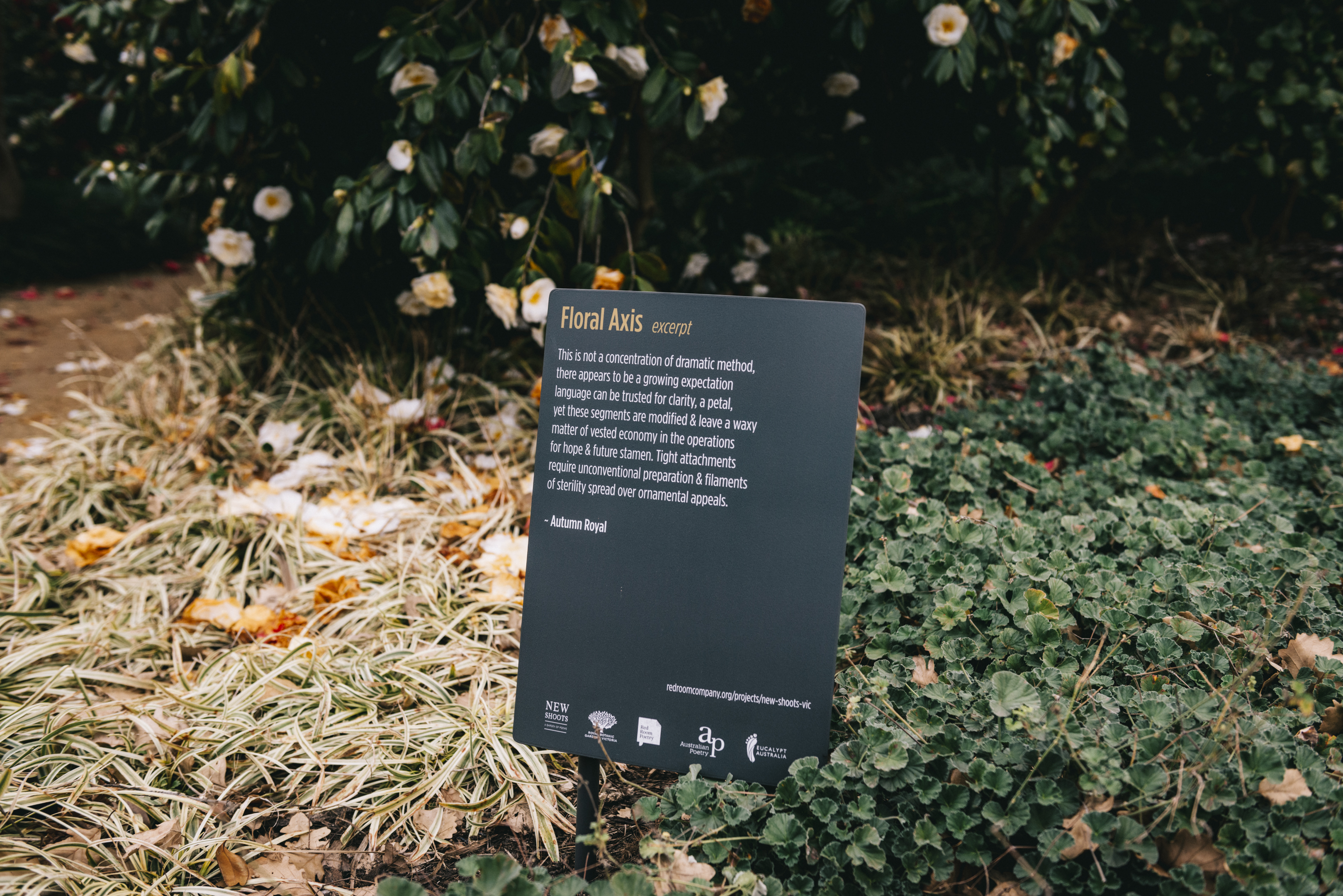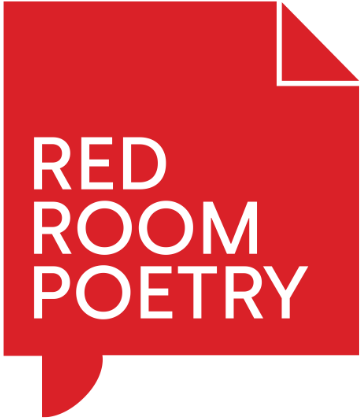"We need flowers to breathe and poetry to understand" - Autumn Royal reflects on New Shoots

The flower-seller & her younger sister share
rival theories about the technical correctness
& angle for cutting & searing turgid stems.
The flower-seller dissolves grief on her tongue
like the butter she misses on the bread of loss.
~ from 'CBD Flower-Seller / Self-portrait' by Autumn Royal
Autumn Royal featured in New Shoots: A Garden of Poems in the Royal Botanic Gardens Victoria. The launch tour followed poems 'planted' in the gardens, an installation of 'poetic pathways' which will remain indefinitely.
---
Does not my heat astound you! And my light!
All by myself I am a huge camellia
Glowing and coming and going, flush on flush. – Sylvia Plath
As a seedling, the camellia is known to be adaptable, a word that can be substituted with the description of adjustable, which contains the word just. The camellia is not just—not just a camellia.
In my reading around the camellia flower I have repeatedly processed the sequence of words: a genus of flowering plants. In a taxonomic rank genus is positioned above species and below family—an arrangement both floral and familial.
The most widely recognised form of the camellia flower is the Camellia japonica also known as the Japanese camellia or tsubaki. The writing of the 17th century Japanese poet Bashō is arguably synonymous with the Camellia japonica. In the below translation by Asatarō Miyamori observe the way Bashō haiku expresses the physicality of the flower and its relationship to its the surrounding environment:
Hanatsubaki
Ochi-zama ni
Mizu koboshi-keri
Hanatsubaki
A Camellia Flower
Behold! a camellia flower
Spilt water when it fell.
While assembling this reflection I found a frayed edition of Frances Bodkin’s Encyclopaedia Botanica: The Essential Reference Guide to Native and Exotic Plants in Australia. The compendium was first published in 1986, a year before my birth when my soon-to-be mother was living in a caravan in the South Australian desert, longing for the colonial cottage garden that her own parents had cultivated in Ouyen, Victoria. On page 207, Bodkin cites that the Camellia japonica is ‘frost resistant but drought tender’. Much to her emotional detriment, my mother wasn’t drought tender and only later in her life was she able to relocate to an environment where she could express herself through the growing and tending to of Camellia japonicas. Nature, like desire, is not neutral.
---
Related poems
---
Regretfully, I hadn’t visited the Royal Botanic Gardens in Melbourne during the several years in which I’ve been working and living in this city. Sometimes all it takes is to be asked. Red Room Poetry and Australian Poetry were the first to ever ask me to visit the Gardens, and such a question could only be answered with poetry.
The most alleviating thing in my life to date has always been the reading and writing of poetry. But what is poetry, and why does the need to create poetry often require a rationalisation? Cecilia Vicuña, a Chilean poet and artist, insists that poetry is ‘nature to be felt, but never apprehended’ that poetry ‘only becomes poetry when its structure / is made not of words but forces’. When you look at a flower—how can you say what it really is?
For this reason, in the poems I’ve written for this project, I have attempted to explore the representational qualities of language—specifically with the interrogation of the binaristic gendered pronouns such as ‘he’ and ‘she’ and the restrictive roles in which our identities may be subjugated into such categories—like picking and isolating flowers in a vase.
Camellias may be propagated from seed, cuttings or grafts—much like poetry. We need flowers to breathe and poetry to understand. This isn’t meant to sound emotional, it’s actually an extremely rational—yet like the petal and a stem—they are both intertwined.

Autumn Royal is a Red Room commissioned poet for New Shoots Victoria.
Autumn Royal is a poet and researcher. Autumn’s poetry and criticism have appeared in publications such as Contemporary Australian Feminist Poetry, Rabbit Poetry Journal, Southerly, Mascara Literary Review and TEXT Journal... read more »
